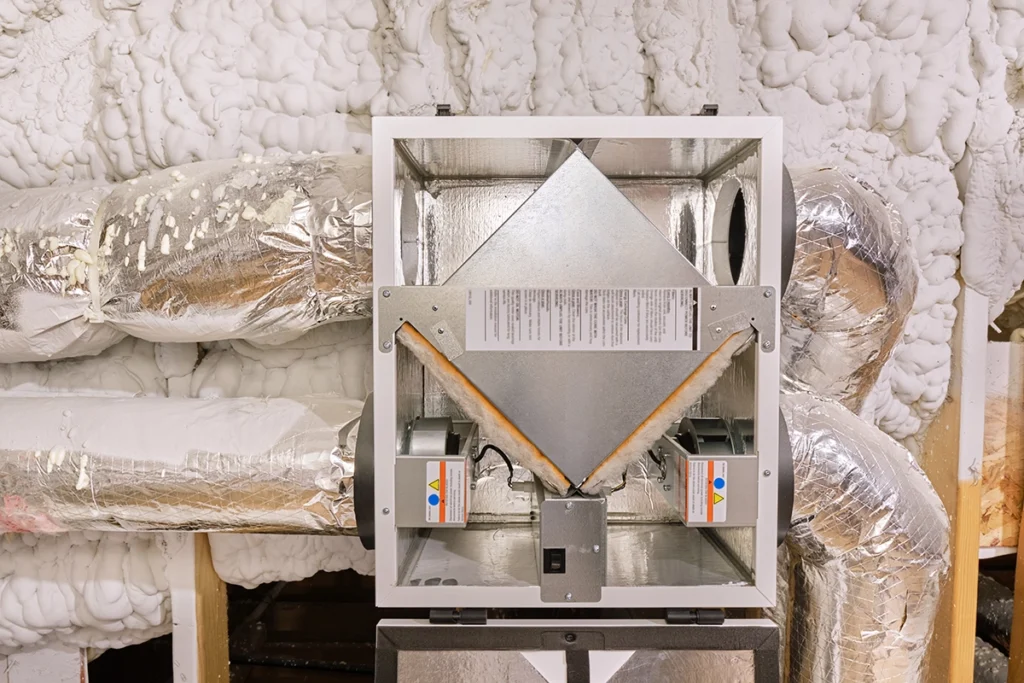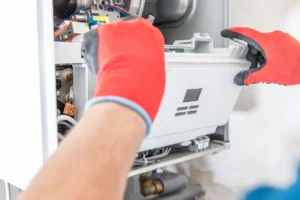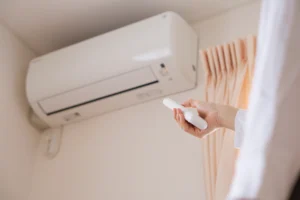Indoor air quality is something most homeowners don’t think about until it becomes a problem. Dust, humidity, and stale air can all affect how comfortable you feel at home. That’s where an ERV comes in. Short for Energy Recovery Ventilator, this system helps keep your air fresh, balanced, and efficient. Many people are surprised to learn that an ERV doesn’t just improve comfort—it also reduces wasted energy.
What Exactly Is an ERV?
An ERV is a ventilation system that exchanges stale indoor air with fresh outdoor air. But it doesn’t stop there. As the two air streams pass through the unit, it transfers heat and moisture between them. That means during winter, you don’t lose all your indoor heat, and in summer, you don’t invite in all the outdoor humidity.
ERV vs. HRV: What’s the Difference?
Homeowners often ask about the difference between an ERV and an HRV (Heat Recovery Ventilator). Both systems bring in fresh air and recover energy, but the big difference is moisture. An HRV transfers only heat, while an ERV also manages humidity. The Department of Energy notes that HRVs work best in colder, dryer climates, while ERVs are suitable for all climates, including humid areas. By balancing both heat and moisture, ERVs help prevent indoor air from feeling sticky in July or bone-dry in January.
How Does an ERV Improve Air Quality?
Air inside your home can build up pollutants like VOCs, allergens, and odors. Without ventilation, that stale air just recirculates. An energy recovery ventilator brings in fresh air while pushing the bad air out. At the same time, it filters the incoming air, reducing pollen and dust that might enter. Over time, this consistent exchange creates a healthier, more comfortable environment. Families notice fewer odors, less lingering humidity, and more even comfort throughout their home.
The Efficiency Advantage of an ERV
No one wants to throw away conditioned air, especially with rising energy costs. Traditional ventilation systems often do just that—expelling heated or cooled air and replacing it with outdoor air at full temperature. An energy recovery ventilator, on the other hand, captures up to 70–80% of the energy from outgoing air. According to the Department of Energy, this process improves efficiency while still delivering fresh air. The result is a healthier home environment without the big spike in utility bills. Pairing an ERV with regular heating maintenance, giving you comfort without unnecessary energy costs.
Where an Energy Recovery Ventilator Makes the Most Sense
An ERV isn’t necessary in every building, but it’s ideal for modern, energy-efficient homes. Newer houses are built tighter, which saves energy but limits natural airflow. Without an ERV, that trapped air can lead to stuffiness and moisture problems. In homes with larger families, where showers, cooking, and laundry generate extra humidity, an ERV can be especially valuable.
ERV and Seasonal Comfort
Because it balances both heat and humidity, an energy recovery ventilator helps in every season. In winter, it keeps air fresh while holding onto valuable indoor warmth. In summer, it reduces incoming humidity, making your air conditioning system more effective. This seasonal balance is why many homeowners see an ERV as an all-year investment in comfort.
That said, outdoor air quality still matters. The EPA cautions against bringing in outside air when pollution levels are high, or during wildfire events. In those cases, checking AirNow or local advisories helps you decide when it’s safe to run your system.
Preventing Common Air Problems
A well-functioning ERV reduces many of the issues we hear about from customers. Dry winter air that cracks skin and furniture. Summer stickiness that makes a home feel damp. Lingering odors from cooking or pets. By controlling airflow and balancing humidity, an ERV addresses these problems before they become bigger headaches.
Contact Us for Expert ERV Help
If you’re curious whether an ERV makes sense for your home, we’d be happy to help. At Sub Zero Temp Control, we’ve installed and serviced countless ventilation systems designed to boost comfort and protect indoor air quality. From explaining your options to completing the installation, our team is here to make the process simple.
Contact us today to schedule a consultation and see how an ERV can make your home healthier and more efficient.
Final Thoughts on Energy Recovery Ventilator Systems
Learning what an ERV is and how it works helps you understand the hidden side of home comfort. By exchanging stale indoor air with filtered outdoor air—while saving energy—ERVs deliver both health and efficiency. At Sub Zero Temp Control in Vancouver, WA, we’re proud to help families enjoy cleaner, fresher air year-round.






